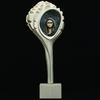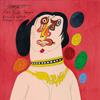The History of the Lithographic Propaganda Poster
- BOSTON, Massachusetts
- /
- June 08, 2011

World War I was the first conflict in which the illustrated color lithographic poster was used as propaganda. Already well established in the world of commerce, travel, and entertainment before the war, illustrated posters had proven the most effective means of advertising yet invented. During the war, the poster’s accessibility and impact made it the single most important means of mass communication.
All sides in World War I used posters to evoke patriotism, sacrifice and hatred of the enemy - efforts which touched virtually every aspect of wartime life. Posters were instrumental in raising money, building ships, recruiting troops, conservation and rationing, provoking patriotism, explaining policy, and marshaling relief efforts. Nowhere were they more successful than in the U.S., where in scarcely two years more than 2,500 designs and about 20 million posters helped persuade Americans to abandon their isolationism and conduct a full-scale war against Germany.
Fine examples from the genre include WWI classics such as the sexy Naval recruiting poster by Howard Chandler Christy, “Gee, I wish I were a man” (1917) alongside grim and dutiful recruiting posters from Germany, France and the UK. Bond posters from the major combatants plus the Soviet Union and Hungary offer a host of themes and strategies, often utilizing flags, coins and other symbols, while production and relief posters evidence the total involvement of the combatants’ populations.
With the outbreak of World War II, the poster once again was pressed into service. While many of the themes and techniques of posters remained the same as in World War I, there were many significant differences due to changes in warfare, society and the poster itself. First, WWII was much more of an ideological struggle that pitted the evils of Fascism and Totalitarianism against Democracy, with extreme differences in the culture and in the Pacific Theater, race of the combatants. Abject hatred of the enemy led to some extremely virulent propaganda in WWII posters, such as Jack Campbell’s “Tokio Kid” poster which features a drooling caricature of a murderous, implacable Tojo; and Boccasile’s vitriolic posters of ape-like Black GIs carrying off Italy’s treasures.
And while World War I was the first war to be considered "total war", World War II with its V1 rockets and fire bombings of major cities truly made every civilian a soldier. As warfare extended itself into every aspect of the home front, two themes became much more prominent – the role of women during the conflict, and espionage. Several posters will show women in factories, in the service, and in relief work; while posters such as an anonymous Canadian poster, “Do your part in Silence” shows Hitler overhearing a group of officers.
Equally significant was the changing nature of the media. While the poster had been at its pinnacle of influence in World War I, radio and film now dominated and made the war more immediate and omnipresent. The poster was in many areas relegated to a supporting role. This role however was increasingly sophisticated, as propaganda posters not only had been refined in World War I, but also during the Bolshevik Civil War, the Spanish Civil War and the political struggles of the Twenties and Thirties. Modern marketing research techniques were often called upon to hone the poster techniques of the major powers.
In general, these trends pushed the poster to be more realistic and less abstract. Photography increasingly replaced illustration as a way to improve credibility to a more knowledgeable and skeptical populace. A fine example is “This is my fight too”, showing a photograph of a young working woman examining her war bonds.
This year, International Poster Gallery mounted an exhibition entitled “Paper Wars,” a fascinating exhibition comparing and contrasting the poster campaigns of combatants in World War I and II. Featuring nearly 50 revealing images, some famous and others rarely seen, the exhibition runs through June, 2011. Gallery hours are Monday through Saturday 10 am to 6 pm and Sunday noon to 6 pm. The Gallery is located at 205 Newbury Street in Boston. Call (617) 375-0076 or visit www.internationalposter.com for information.
In addition to gallery shows and special exhibitions, IPG’s award-winning website, www.internationalposter.com offers the largest, most comprehensive online collection of vintage advertising posters in the world. Originally launched in 1998, the site contains nearly 4,500 images accessible through a powerful search engine.
Written by Jim Lapides, Owner, International Poster Gallery
Contact:
Joshua PayneFusco & Four
617 363-0405
Info@fuscofour.com
8 Allenwood Street
Boston, Massachusetts
info@fuscofour.com
617-363-0405
http://www.fuscofour.com
About Fusco & Four/Ventures, LLC
Founded in 1979 by principals Tony Fusco and Robert Four, Fusco & Four is a full-service Marketing and Public Relations agency, specializing in the arts, lifestyle, leisure and luxury clients. The agency has worked with more than 300 arts-related clients over the past 30 years, including museums, classical music groups, galleries, auction houses, show promoters, internationally-known brands and Internet-based companies in the arts and antiques field. Fusco & Four also produces three annual art and design shows in Boston: the Boston International Fine Art Show, AD 20/21: Art & Design of the 20th & 21st Centuries, and The Ellis Boston Antiques Show. Please direct inquiries to Tony Fusco.
















